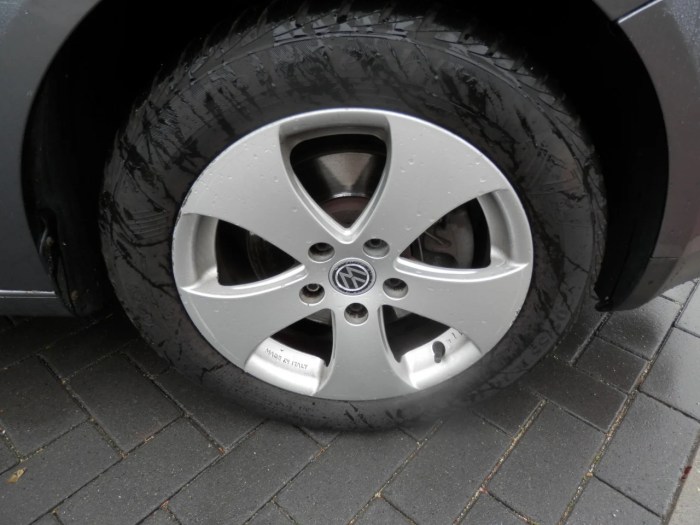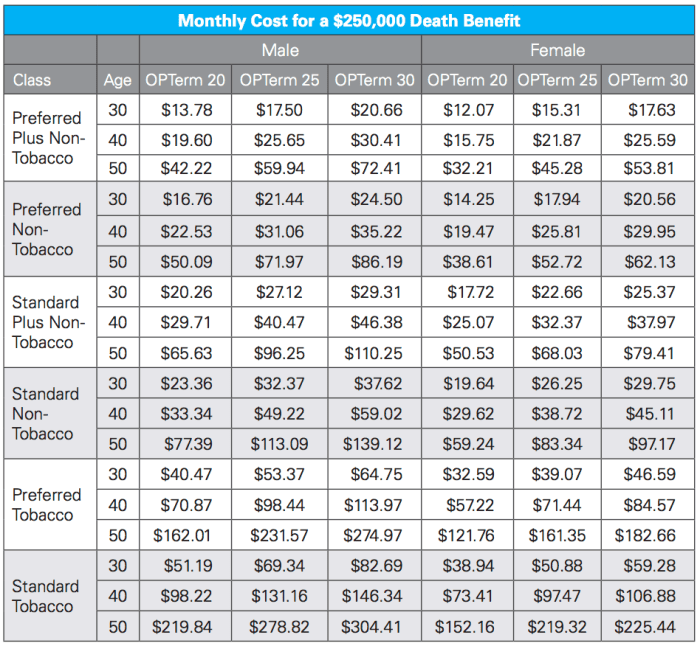Commercial Property Insurance Essentials for Businesses
Commercial Property Insurance serves as a vital safety net for businesses, safeguarding their physical assets against unexpected events. This type of insurance is essential for protecting everything from office buildings to equipment, ensuring that businesses can recover swiftly from losses due to theft, fire, or other perils.
Understanding its components, coverage options, and the intricacies of the claims process will empower business owners to make informed decisions. By doing so, they can not only protect their investments but also navigate the complexities of commercial property insurance with confidence.
Understanding Commercial Property Insurance
Commercial property insurance is a critical financial tool that protects businesses from loss or damage to their physical assets. It plays a vital role in ensuring that companies can recover and continue operations after unforeseen events such as fires, theft, or natural disasters. As businesses invest in physical locations and equipment, having comprehensive insurance coverage becomes essential to safeguard against potential financial setbacks.A typical commercial property insurance policy covers various types of properties essential for business operations.
This includes not only the buildings owned by the business but also the contents within them, such as machinery, inventory, and office furnishings. Understanding the specifics of what is covered can help business owners make informed decisions about their insurance needs.
Types of Properties Covered
The coverage provided by commercial property insurance can encompass a broad range of property types. Here are the primary categories typically included:
- Buildings: This includes physical structures like commercial offices, warehouses, and manufacturing facilities owned by the business.
- Personal Property: Fixtures, furniture, equipment, and inventory owned by the business are protected under this category.
- Improvements and Betterments: Any upgrades or enhancements made to leased properties that add value are also covered.
- Outdoor Property: This includes fences, signs, and landscaping that may be on the property premises.
Each of these property types contributes to the overall functionality of a business and should be adequately insured to mitigate risks.
Components of a Typical Policy
Understanding the fundamental components of a commercial property insurance policy is essential for effective risk management. A typical policy comprises several key elements that define the scope of coverage:
- Coverage Types: Policies can provide different types of coverage, including named-peril, which covers specific risks, and all-risk, which covers all risks except those explicitly excluded.
- Limits of Coverage: Each policy will have limits on the amount it will pay for different types of property loss, which should align with the value of the insured assets.
- Deductibles: Most policies require the insured to pay a certain amount out of pocket before the insurance kicks in, influencing the premium rates.
- Exclusions: Understanding what is not covered is critical, as policies often exclude certain risks such as floods or earthquakes, which may require additional coverage.
Comprehensively reviewing these components allows business owners to tailor their policies effectively, ensuring sufficient protection tailored to their specific needs and circumstances.
“Investing in commercial property insurance is investing in the resilience and longevity of your business.”
Types of Coverage Available
Commercial property insurance offers various coverage options that cater to the diverse needs of businesses. Understanding the types of coverage available is crucial for tailoring an insurance policy that adequately protects your assets against potential risks. By choosing the right coverage, businesses can ensure that they are safeguarded from unexpected events that could lead to significant financial losses.Among the various types of coverage, businesses can select from several options.
Each type addresses specific risks, allowing for a customized approach to coverage. Here are the most common types of coverage available under commercial property insurance:
Standard Coverage Options
Standard coverage options typically include the core protections businesses need. These coverages can be foundational for any commercial property insurance policy.
- Building Coverage: Protects the physical structure of the business property against risks such as fire, vandalism, and certain weather events.
- Contents Coverage: Covers the business’s personal property, including furniture, inventory, and equipment, typically against similar perils as building coverage.
- Business Interruption Coverage: Provides financial assistance during periods when a business cannot operate due to a covered loss, helping to cover lost income and ongoing expenses.
- Equipment Breakdown Coverage: Protects against the loss resulting from the breakdown of machinery and equipment, including repair and replacement costs.
In addition to these standard options, businesses might consider several additional coverages that can enhance their policies:
Additional Coverages to Enhance Policies
Enhancing a commercial property insurance policy with additional coverages can provide a more comprehensive safety net. These extra options can address more specific risks that a business might face.
- Flood Insurance: Protects against damage caused by flooding, which is often not included in standard policies.
- Earthquake Insurance: Offers coverage for damages resulting from earthquakes, essential for businesses located in seismic zones.
- Cyber Liability Insurance: Provides protection against losses related to data breaches and cyber-attacks, increasingly important in the digital age.
- Ordinance or Law Coverage: Covers additional costs incurred when a property must be rebuilt to current codes after a loss, which standard policies may not cover.
Named Perils Coverage versus All-Risk Coverage
Understanding the difference between named perils coverage and all-risk coverage is essential for selecting the right policy. Each type has distinct features that can significantly affect protection levels.
Named Perils Coverage
This policy specifically lists the perils that are covered. For example, a named perils policy may cover risks such as fire, theft, and vandalism but will not cover anything not explicitly mentioned. This makes it crucial for businesses to ensure that the perils that are most likely to affect them are included in the policy.
All-Risk Coverage
Also known as open perils coverage, this policy covers all risks unless specifically excluded. For instance, if a business suffers damage from a peril that is not mentioned in the exclusions, it will be covered. This type of coverage typically offers broader protection but may come at a higher premium compared to named perils coverage.
Choosing between named perils and all-risk coverage can significantly influence a business’s risk management strategy, depending on the specific needs and exposures of the business.
By analyzing the types of coverage available and understanding their implications, businesses can make informed decisions that protect their physical assets and ensure continuity in the face of potential disasters.
Factors Influencing Premiums

Source: publicdomainpictures.net
The cost of commercial property insurance premiums is influenced by a range of factors that reflect the unique risks associated with each property. Understanding these factors can help business owners better prepare for potential costs and find suitable coverage options. One of the primary drivers of insurance premiums is the property’s location. This includes considerations such as proximity to fire departments, historical weather patterns, and the level of crime in the area.
For instance, properties situated in flood-prone regions may attract higher premiums due to the increased risk of water damage. Additionally, the type of industry plays a critical role; businesses in high-risk sectors such as manufacturing or construction generally pay more for coverage compared to those in less hazardous industries like retail.
Impact of Property Location
The geographical location of a commercial property is a significant factor in determining insurance premiums. Various elements come into play, including:
- Natural Disasters: Areas prone to hurricanes, earthquakes, or wildfires see elevated premiums due to the likelihood of severe damage.
- Local Crime Rates: Locations with high rates of theft or vandalism will incur higher premiums, as the risk of loss is greater.
- Proximity to Emergency Services: Properties closer to fire stations or police departments may enjoy lower rates due to quicker response times in emergencies.
Influence of Industry Type
The specific industry in which a business operates also significantly affects insurance costs. Each industry has inherent risks that can impact premiums.
- High-Risk Industries: Businesses in areas like construction, manufacturing, or food services face higher premiums due to increased risk of accidents or damages.
- Low-Risk Industries: Companies in sectors such as finance or professional services typically benefit from lower insurance costs.
- Claims History: An industry’s claims history can influence premiums; industries with frequent claims may face higher rates.
Role of Property Value
The overall value of the property is a critical element in determining insurance premiums. As the value of a commercial property increases, so does the potential payout for the insurer, leading to higher premiums.
- Replacement Cost: The cost to replace the property plays a vital role; higher replacement costs lead to increased premiums.
- Upgrades and Improvements: Renovations or expansions can raise the property’s value, thereby increasing insurance costs.
- Market Conditions: Fluctuations in the real estate market can also impact the assessed value of a property, influencing insurance rates.
Impact of Risk Assessments
Risk assessments are integral in determining the premium rates for commercial property insurance. Insurers conduct thorough evaluations to assess various risk factors.
- Property Inspections: Insurers may require property inspections to evaluate safety features, maintenance, and any existing hazards.
- Risk Management Practices: Companies demonstrating robust risk management strategies may qualify for lower premiums as they present a reduced risk to insurers.
- Historical Data: Insurers utilize historical data and statistical models to predict potential risks associated with specific properties and industries, influencing premium calculations.
Understanding these factors is crucial for business owners to effectively manage their insurance costs and ensure adequate protection for their properties.
Claims Process
The claims process for commercial property insurance is a vital step in managing risks associated with property damage or loss. Understanding how to effectively navigate this process can significantly impact the speed and success of a claim. Here, we’ll walk through the essential steps involved in filing a claim, the necessary documentation required, and common challenges that may arise along the way.
Steps Involved in Filing a Claim
To ensure a smooth claims experience, it is crucial to follow a structured approach when filing a claim. The general steps include:
- Notify Your Insurance Provider: As soon as damage occurs, report the incident to your insurance company. Prompt notification is essential to start the claims process.
- Document the Damage: Take clear photos or videos of the damage and gather any relevant evidence, such as witness statements or police reports if applicable.
- Complete the Claim Form: Fill out the necessary claim form accurately, providing detailed information about the incident and the extent of the damage.
- Submit Documentation: Along with the claim form, submit all required documentation to support your claim. This may include repair estimates, invoices, and any other related documents.
- Follow Up: Maintain communication with your insurance adjuster for updates on your claim status and provide any additional information they may request.
Necessary Documentation for a Successful Claim
Having the right documentation is crucial for expediting the claims process. Below are the key documents generally required:
“Comprehensive documentation strengthens the validity of your claim and aids in quicker resolutions.”
- Claim Form: Completed and signed claim form detailing the incident.
- Proof of Loss: A statement outlining the items damaged and their estimated replacement costs.
- Photos/Videos: Visual evidence of the damage to support your claim.
- Repair Estimates: Quotes from contractors or service providers for repairs needed.
- Police Report: Necessary if the claim involves theft, vandalism, or any crime-related incidents.
- Witness Statements: Testimonies from individuals who witnessed the incident can lend credibility to your claim.
Common Challenges During the Claims Process
Navigating the claims process can present several challenges. Understanding these hurdles and knowing how to address them can lead to a smoother experience. The following are common challenges faced:
“Being proactive in addressing challenges can prevent delays in the claims process.”
Having strategies in place can help mitigate these challenges:
- Delayed Response: If your insurer takes time to respond, follow up regularly to ensure your claim is being processed.
- Insufficient Documentation: Ensure all required documents are prepared and submitted to avoid delays. Double-check the insurance company’s requirements.
- Underpayment Issues: If the settlement offer is lower than expected, review your policy and negotiate with your insurer with documented evidence of your losses.
- Complexity of Coverage: If the claim involves multiple coverages, consult with your agent to clarify what is applicable and ensure your claim accounts for all aspects.
- Claims Denial: If your claim is denied, understand the reasons and appeal the decision with additional documentation or clarification if necessary.
Common Exclusions and Limitations

Source: publicdomainpictures.net
Commercial property insurance is designed to protect businesses from various risks, but it’s crucial for business owners to understand that not all situations are covered. Policies often come with exclusions and limitations that can impact the level of coverage available. Being aware of these exclusions helps business owners to make informed decisions regarding additional coverage or risk management strategies.Exclusions and limitations in commercial property insurance can vary significantly between policies, but there are common themes that many insurers adhere to.
These exclusions can leave businesses vulnerable if not properly addressed. Understanding these limitations is essential for creating a comprehensive risk management plan.
Typical Exclusions in Commercial Property Insurance
Certain risks are typically excluded from commercial property insurance policies. Knowing these can assist business owners in evaluating their vulnerabilities. Common exclusions include:
- Earthquakes and Floods: Most standard policies do not cover damage caused by earthquakes or flooding. Separate policies or endorsements are usually necessary for these natural disasters.
- Wear and Tear: Damage resulting from normal wear and tear, gradual deterioration, or lack of maintenance is not covered, meaning businesses must keep up with regular upkeep to prevent losses.
- Intentional Acts: Any damage or loss resulting from intentional acts by the insured or anyone acting on their behalf is excluded. This serves to prevent fraudulent claims.
- War and Terrorism: Damage caused by acts of war, terrorism, or civil commotion is typically excluded, although some insurers may offer optional coverage for terrorism.
- Employee Theft: While some policies may cover theft, employee theft specifically is often excluded unless a separate endorsement is purchased.
Limitations in Coverage and Their Implications
Limitations in coverage refer to specific constraints that can affect the amount of coverage available in certain situations. Understanding these limitations can help business owners avoid unexpected financial burdens.Examples of limitations include:
- Coverage Caps: Some policies have limits on the amount payable for certain types of losses, which can leave businesses underinsured in the event of a significant claim.
- Valuation Methods: Policies may have specific methods for valuing property at the time of loss, such as Actual Cash Value (ACV) rather than Replacement Cost, which can significantly affect the payout in the event of a claim.
- Specific Property Limits: Certain items may have lower coverage limits, such as electronics or artwork, requiring additional coverage if their value exceeds the stipulated limit.
Examples of Non-Covered Situations
Understanding specific scenarios that may not be covered under standard policies can help businesses plan for potential risks. Here are some notable examples:
- Cyber Attacks: Most commercial property insurance policies do not cover losses from cyber attacks or data breaches. Businesses often need separate cyber liability insurance for this risk.
- Business Interruption Due to Pandemic: Many policies did not cover business interruptions caused by pandemics, as seen during the COVID-19 crisis. Owners often require specific coverage for pandemic-related losses.
- Damage from Poor Construction: If a building suffers damage due to improper construction or design flaws, this may not be covered under property insurance, leaving owners to bear the costs.
Importance of Risk Management: Commercial Property Insurance
Effective risk management is a critical aspect of running a successful business, especially in the realm of commercial property insurance. By identifying potential risks and implementing strategies to mitigate them, businesses can significantly reduce their insurance costs while safeguarding their assets. This proactive approach not only protects against unforeseen events but can also lead to more favorable insurance premiums and conditions.Implementing effective risk management strategies can result in substantial cost savings on insurance premiums.
Insurance companies often assess the risk profile of a business to determine the premiums they will charge. A business that demonstrates a commitment to reducing risks may be rewarded with lower premiums. This is because insurers view such businesses as less likely to file claims, thus reducing their own financial exposure. Moreover, a robust risk management plan can enhance business operations and improve overall safety, making it a wise investment.
Methods to Minimize Potential Risks
Businesses can adopt various methods to minimize potential risks, which not only protects their property but also contributes to a safer working environment. Here are several strategies that can be effectively implemented:
- Conduct Regular Risk Assessments: Periodically evaluate the business environment and identify potential hazards that could lead to property damage or loss.
- Implement Safety Protocols: Develop and enforce safety policies that comply with industry regulations, ensuring that employees are trained to handle emergencies safely.
- Invest in Security Measures: Utilize surveillance cameras, secure access systems, and alarm systems to deter theft and vandalism.
- Maintain Equipment Regularly: Ensure that all machinery and equipment are regularly inspected and maintained to prevent malfunctions that could lead to property damage.
- Develop a Business Continuity Plan: Prepare for unexpected disruptions by creating a plan that Artikels how to maintain operations during emergencies.
To assist businesses in assessing their risk management needs, the following checklist can be utilized. This will ensure that all critical areas are addressed:
Risk Management Assessment Checklist, Commercial Property Insurance
This checklist helps identify and evaluate risks within a business’s operations.
| Checklist Item | Description |
|---|---|
| Risk Identification | Document all potential risks that may affect the business, including environmental, operational, and financial risks. |
| Risk Analysis | Analyze the likelihood and impact of identified risks to prioritize them effectively. |
| Risk Control Measures | Detail actions taken to mitigate each identified risk, including safety protocols and insurance coverage. |
| Employee Training | Ensure all employees are trained on risk management practices and emergency procedures. |
| Regular Review | Schedule regular reviews of the risk management plan to adapt to any changes in the business environment or operations. |
By integrating these methods and regularly assessing risks, businesses can create a safer environment while enhancing their commercial property insurance strategy. This proactive stance not only protects assets but also positions the business favorably in the eyes of insurers, leading to potentially lower insurance costs and improved financial stability.
Choosing the Right Policy

Source: publicdomainpictures.net
Selecting the right commercial property insurance policy is a crucial decision for any business owner. The policy you choose can significantly affect your financial stability in the event of a disaster, theft, or other unforeseen incidents. Understanding the various criteria that influence your choice is essential for securing adequate coverage that aligns with your specific needs.When evaluating a commercial property insurance policy, businesses should consider several key criteria to ensure they select the most suitable option.
These criteria include coverage limits, the types of risks covered, deductibles, and the financial strength of the insurance provider. Each of these factors plays a vital role in determining the effectiveness of your policy in protecting your assets.
Criteria for Selecting a Policy
Understanding the various criteria will help you make an informed choice. Here are some important factors to consider:
- Coverage Limits: Ensure that the coverage limits adequately reflect the value of your property and assets. Underinsurance can lead to significant losses in the event of a claim.
- Types of Risks Covered: Review the types of risks that the policy covers, such as fire, theft, natural disasters, and vandalism. Make sure the policy aligns with the specific risks your business faces.
- Deductibles: Assess the deductibles associated with the policy. A higher deductible may lower your premium but could lead to significant out-of-pocket expenses during a claim.
- Provider Reputation: Research the insurance provider’s reputation in the industry. Look for customer reviews, ratings, and their claims handling process to ensure a reliable experience.
- Cost of Premiums: Compare the premiums of different policies. While it’s tempting to choose the lowest price, consider the overall value and coverage provided.
Comparison of Insurance Providers
Choosing the right insurance provider is just as important as selecting the policy itself. Different insurance companies offer varying coverage options and levels of customer service. To facilitate your decision, consider the following key aspects when comparing providers:
- Coverage Options: Some insurers provide more extensive coverage options than others. Look for policies that offer additional endorsements or riders to customize your coverage.
- Claims Process: Investigate the claims process of potential providers. A straightforward and efficient claims process can save you time and stress during a loss.
- Customer Support: Evaluate the level of customer support each provider offers. Availability of assistance, responsiveness, and helpfulness are vital for your peace of mind.
- Financial Strength: Review the financial ratings of insurance companies from independent rating agencies. A strong financial rating indicates that the provider is likely to meet its obligations.
Guide for Conducting an Insurance Policy Review
Regularly reviewing your insurance policy is essential to ensure that it continues to meet your business needs. Here’s a guide to help you conduct an effective policy review:
- Assess Changes in Your Business: Consider any changes in your business operations, such as expansions, new equipment purchases, or changes in inventory levels that may necessitate adjustments to your coverage.
- Evaluate Coverage Adequacy: Compare your current coverage limits with the value of your property and assets. If there have been significant increases, consider raising your coverage limits accordingly.
- Review Policy Exclusions: Understand the exclusions in your policy and consider whether you need additional coverage for certain risks not included in your current plan.
- Get Quotes from Multiple Providers: Seek quotes from different insurance providers to ensure you’re getting competitive rates and comprehensive coverage options tailored to your needs.
- Consult with an Insurance Agent: Consider consulting with an insurance agent who specializes in commercial property insurance. Their expertise can provide valuable insights and recommendations.
Legal Considerations
Navigating the landscape of commercial property insurance entails understanding various legal implications that can significantly impact a business. It’s essential for business owners to recognize that insurance coverage is not just a safety net, but also a legal obligation in many jurisdictions. Keeping abreast of these legalities can prevent unforeseen complications and ensure compliance with local regulations.In various jurisdictions, the law dictates minimum levels of insurance coverage that businesses must maintain to operate legally.
These requirements can vary widely based on location, type of business, and the nature of assets being insured. Understanding these local laws is critical, as failing to comply can result in legal penalties, including fines or even the loss of the right to operate.
Insurance Coverage Requirements by Jurisdiction
Different jurisdictions impose distinct requirements regarding commercial property insurance. Here are some key considerations:
- State Regulations: Many states have mandated insurance coverage levels, especially for businesses in certain industries such as construction or healthcare. For example, California requires businesses with specific types of operations to carry workers’ compensation insurance, which may indirectly influence property insurance needs.
- Local Ordinances: Some municipalities may have additional requirements, such as mandating coverage for flood damage in flood-prone areas, regardless of federal mandates.
- Industry Specifics: Different sectors may have unique insurance obligations. For instance, restaurants may need additional coverage for equipment and liability due to the nature of their operations.
Understanding these legal requirements is not merely about compliance but also about protecting business interests. Properly navigating the legal language in insurance policies can safeguard a business against potential disputes and coverage gaps.
Understanding Legal Terms in Policies
A solid grasp of legal terminology found within insurance policies is crucial for business owners. The language used can often seem convoluted, but comprehending key terms can protect a business’s interests. Important aspects to focus on include:
- Definitions of Coverage: Policies often define what is covered and under what circumstances. For instance, knowing the difference between “actual cash value” and “replacement cost” can dramatically affect a claim’s outcome.
- Exclusions: Policies will Artikel what is not covered. Understanding these exclusions can prevent misunderstandings during claims processes and ensure business owners take proactive measures to mitigate risks.
- Liability Clauses: Many policies include clauses that allocate liability in case of loss or damage. Recognizing these clauses can help businesses understand their responsibilities and the extent of their coverage.
Understanding the legal language in insurance documents is essential for minimizing risk and ensuring appropriate coverage.
In conclusion, legal considerations surrounding commercial property insurance are multifaceted and require careful attention. By adhering to local regulations and understanding policy language, businesses can protect themselves from legal pitfalls and ensure their interests are adequately safeguarded.
Future Trends in Commercial Property Insurance
The commercial property insurance landscape is continually evolving, driven by various factors including advancements in technology and the increasing impact of climate change. As businesses adapt to new challenges, the insurance industry must also innovate to provide equitable coverage and efficient claims processing. This section highlights emerging trends and the substantial changes shaping the future of commercial property insurance.
Impact of Technology on Underwriting and Claims Processes
The integration of technology in the commercial property insurance sector is revolutionizing the way insurers assess risk and manage claims. Innovations such as artificial intelligence (AI) and machine learning are streamlining underwriting processes, allowing insurers to analyze vast datasets for more accurate risk assessments. This can lead to more personalized premiums and faster policy approvals.Additionally, technology facilitates a more efficient claims process.
For instance, the use of blockchain technology can enhance transparency and security in claims handling. Real-time tracking and digital tools enable policyholders to submit claims and receive updates on their status instantly, reducing turnaround times significantly.
Influence of Climate Change on Insurance Policies
Climate change is reshaping the commercial property insurance market by influencing the types of policies and coverage options available. Insurers are increasingly aware of the potential risks associated with extreme weather events, such as flooding, hurricanes, and wildfires. As a result, there is a growing emphasis on offering tailored coverage that addresses these specific risks.Insurers may introduce new coverage options focused on climate resilience, which could include enhancements for properties that invest in sustainable building practices or undergo retrofitting to enhance disaster preparedness.
As businesses face more frequent and severe climate-related events, these specialized policies will become increasingly relevant.
Emerging Trends in Risk Assessment
The methodology for risk assessment is transitioning towards a more proactive approach. Insurers are utilizing advanced analytics and predictive modeling to forecast potential risks associated with specific industries or geographical areas. This shift enables businesses to understand their vulnerabilities better and encourages them to implement risk mitigation strategies to lower their insurance premiums.The adoption of Internet of Things (IoT) technology also plays a significant role in risk assessment.
Smart sensors can provide real-time data regarding property conditions, allowing insurers to monitor risks such as fire hazards or equipment malfunctions. This data-driven approach not only informs underwriting decisions but also aids in loss prevention efforts.
“The future of commercial property insurance lies in a blend of innovative technology and a keen awareness of environmental factors.”
Conclusion
In summary, navigating the world of Commercial Property Insurance is crucial for business sustainability and risk management. By grasping the different coverage types, assessing risks, and understanding policy nuances, business owners can secure the protection they need. Staying informed about industry trends and legal requirements will further enhance their ability to mitigate risks and adapt to future challenges.
FAQ Guide
What is Commercial Property Insurance?
Commercial Property Insurance is a type of insurance that protects businesses against losses to their physical assets, such as buildings and equipment.
Who needs Commercial Property Insurance?
Any business with physical assets, including retail stores, offices, and manufacturing facilities, should consider Commercial Property Insurance.
How do I determine the right coverage amount?
The right coverage amount is typically based on the value of your assets and anticipated risks, often assessed with the help of an insurance professional.
Are there different types of Commercial Property Insurance?
Yes, there are several types, including named perils and all-risk coverage, each offering different levels of protection.
How often should I review my policy?
It’s recommended to review your policy annually or whenever you experience significant changes in your business operations or asset values.





